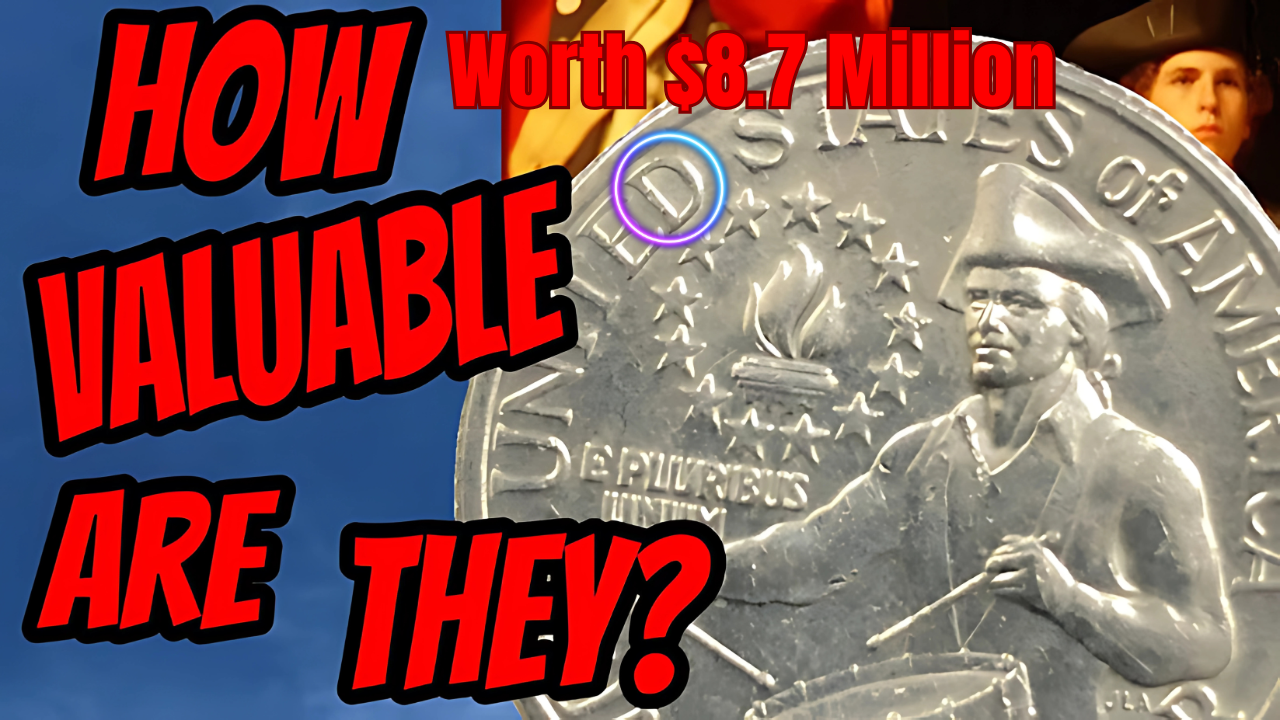Imagine rummaging through your coin jar and stumbling upon a quarter that could be worth millions. That’s the tantalizing possibility surrounding the 1976 Bicentennial quarter, a coin that has captured the imagination of collectors and treasure hunters across the United States. With rumors swirling about rare variants fetching up to $7.7 million, it’s worth exploring what makes these coins special, which ones are truly valuable, and whether you might have a fortune in your pocket change.
The History of the Bicentennial Quarter
Commemorating America’s 200th Anniversary
The 1976 Bicentennial quarter was minted to celebrate the 200th anniversary of the Declaration of Independence. Unlike regular quarters, it features a unique reverse design by Jack L. Ahr: a colonial drummer boy, a torch of victory, and a ring of 13 stars representing the original colonies. The obverse displays the dual dates “1776–1976” instead of a single year, making it instantly recognizable.
Production and Availability
Over 1.6 billion Bicentennial quarters were produced for general circulation, and millions more were minted in special collector sets. Most were struck in copper-nickel clad, but a select number were made in 40% silver for collectors. These silver-clad coins were never intended for circulation and are much rarer than their copper-nickel counterparts.
What Makes a Bicentennial Quarter Valuable?
Minting Errors and Rarity
The vast majority of Bicentennial quarters are worth only their face value. However, certain rare variants can command significant sums. The most valuable coins are those with minting errors, such as:
-
Double Die Errors: Where parts of the design appear slightly doubled.
-
Off-Center Strikes: Where the coin is struck off-center, leaving part of the design missing.
-
Wrong Planchet Errors: Where the coin is struck on a blank intended for another denomination.
-
Misaligned Dates or Metal Variations: Where the date or metal composition is unusual or incorrect536.
Condition and Grading
Coins in uncirculated or proof condition, especially those graded MS-67 or higher by professional services like PCGS or NGC, are far more valuable than those with wear and tear. Silver-clad proofs or coins with unique errors can fetch hundreds or even thousands of dollars at auction. However, claims of multi-million dollar valuations are not supported by verified sales or expert consensus.
The $7.7 Million Myth and Other Wild Claims
Separating Fact from Fiction
Stories about Bicentennial quarters worth $7.7 million, $11 million, or even $2.2 billion have circulated widely online. These claims are largely internet myths or clickbait, designed to generate excitement and web traffic. No legitimate auction or grading service has ever verified a sale of a Bicentennial quarter for such astronomical sums.
Why the Hype?
The hype stems from the combination of the coin’s historical significance, its unique design, and the allure of finding a rare error coin. The possibility that a valuable error coin could still be in circulation adds to the excitement, even if the odds are extremely low.
How to Spot a Valuable Bicentennial Quarter
Key Features to Look For
If you want to check your coin jar for a potential treasure, look for:
-
Dual Dates: “1776–1976” on the obverse.
-
Drummer Boy Reverse: The colonial drummer and 13 stars.
-
Minting Errors: Double die, off-center strike, wrong planchet, or misaligned date.
-
Silver Clad: These coins are heavier and have a different edge than copper-nickel coins.
-
Uncirculated Condition: No wear, scratches, or tarnish.
Where to Find Them
Bicentennial quarters are still found in circulation today, thanks to their massive mintage. While most are worth only 25 cents, the thrill of the hunt keeps collectors searching through rolls of quarters, coin jars, and estate sales.
Realistic Value of Bicentennial Quarters
Typical Values
Most circulated Bicentennial quarters are worth their face value. Uncirculated examples can be purchased for about $2 each. Silver-clad coins, especially those in proof condition, can fetch $10 to $50 or more, depending on their grade and rarity. Coins with dramatic errors or in exceptional condition can command higher prices, but not in the millions.
Record Sales
The highest verified prices for Bicentennial quarters with rare errors or in top condition are typically in the low thousands, not millions. For example, a Bicentennial quarter with a dramatic off-center strike or a significant double die error might sell for several hundred to a few thousand dollars at auction.
Why Collect Bicentennial Quarters?
Historical Significance
The Bicentennial quarter is a tangible piece of American history, commemorating a pivotal moment in the nation’s story. Its unique design and dual dates make it a favorite among collectors and history buffs alike.
The Thrill of the Hunt
For many, the appeal lies in the possibility of finding a rare or valuable coin in everyday change. The Bicentennial quarter’s widespread availability and the potential for rare errors make it a popular target for roll hunters and casual collectors.
FAQs
Q1: Is there really a Bicentennial quarter worth $7.7 million?
A: No, there is no verified sale of a Bicentennial quarter for $7.7 million. Such claims are internet myths or clickbait.
Q2: What makes a Bicentennial quarter valuable?
A: Valuable Bicentennial quarters typically have rare minting errors, are made of 40% silver, or are in pristine uncirculated condition5.
Q3: Are Bicentennial quarters still in circulation?
A: Yes, with over 1.6 billion minted, Bicentennial quarters are still commonly found in pocket change, though most are only worth face value.

